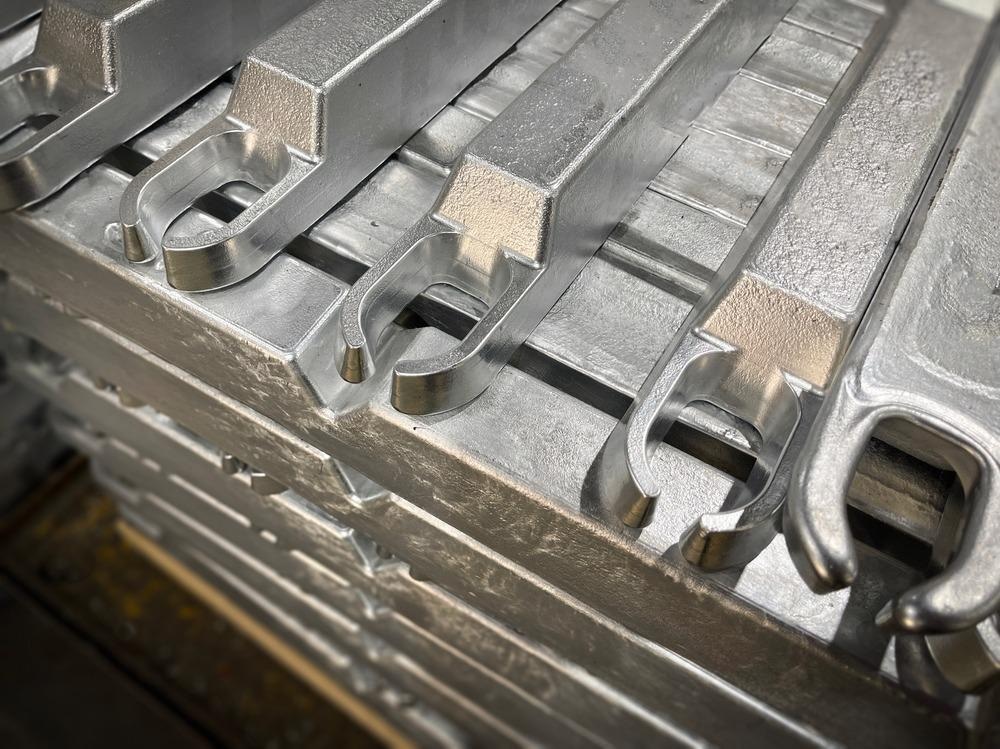In a recently published research article in the Journal of Materials Science & Technology, scientists developed a high-throughput hot-isostatic-pressing-based micro synthesis method to synthesize and characterize a large number of high entropy alloys from a multielement system simultaneously.

Study: High throughput synthesis enabled exploration of CoCrFeNi-based high entropy alloys. Image Credit: Javier Ruiz/Shutterstock.com
The researchers used CoCrFeNi as the base alloy and added 9 more transition metals in different proportions to obtain 85 alloys. This process is both cost-effective and time-saving in the analysis of a large number of combinational alloy systems.
Why High-Throughput Synthesis Methods are Essential for High Entropy Alloys?
The high entropy alloys (HEAs) contain five or more primary elements in equal, nearly equal, or relatively high proportions. They provide a vast domain for experiments with different alloy compositions. The addition of each different element further extends the composition pool exponentially. The one-by-one synthesis and characterization of all these compositions are inefficient. Thus, there is a need for the development of efficient high-throughput methods and materials genome sequencing for HEAs.
Presently, laser additive manufacturing (LAM), combinational thin-film synthesis, and rapid prototyping processes are used for the synthesis of large compositions of HEAs. Similarly, several computational methods, such as calculations of phase diagrams (CALPHAD), first-principle calculations, parametric criteria, and machine learning are used for large-scale analysis of HEA compositions.
The cantor alloy (CoCrFeNiMn) is one of the most researched HEA compositions. It has an equiatomic five-element composition with a single FCC phase. However, there are still many elements that can be added to the cantor alloy and the resulting composition-processing-structure-property relationships can be studied.
About the Study
In this study, manganese (Mn) of the cantor alloy was replaced with 8 other transition metal-based principal elements to form 85 alloy compositions. These additive metals are copper (Cu), titanium (Ti), niobium (Nb), tantalum (Ta), molybdenum (Mo), tungsten (W), aluminum (Al), and silicon Si). Additionally, the synthesized alloy compositions include 1 quaternary, 9 quinary, and 36 senary alloy systems.
A high-throughput hot-isostatic-pressing micro synthesis approach (HT-HIP-MSA) was used for the synthesis of the alloy system. First, the researchers made 85 cells carrying honeycomb structure arrays using LAM. Then, mechanically-milled powders of all 13 principal elements were loaded in each cell with varying compositions followed by putting it into a carbon steel container. The container was subjected to HIP treatment, in which it was heated at 1,000 ℃ and 150 MPa pressure for 4 hours under an argon environment followed by slow cooling at a rate of 10 ℃/min to obtain 85 samples with distinct compositions.
Observations
From the X-ray fluorescence (µ -XRF) data, it was evident that CoCrFeNi-Mnx retained a single FCC phase with Mn addition ranging from 0.5 to 3 atomic ratio. Moreover, as the Mn content increased, the corresponding major peak move to the left, confirming the increase in lattice parameters owing to the large radius of Mn. The X-ray diffraction (XRD) result indicated that no intermetallic compounds were formed by Cu addition, but it tends to form two FCC solid solution phases due to the large positive enthalpy of Cu with other components.
More from AZoM: Increasing Wear Resistance with Laser Heat Treatments
Moreover, Al was found to destabilize the FCC structure of the HEA. As the amount of Al increased from 0.5 to 3 atomic ratio, the primary phases of CoCrFeNi-Alx alloys changed from single FCC to FCC+BCC to BCC phase. This result was also the same for Nb, Mo, Ta, and W. Additionally, excess of Nb or Ta alloying additions encouraged laves-phase formation in CoCrFeNi-Nbx and -Tax HEAs. Also, an excess of Nb or Ta alloying additions encouraged laves-phase formation in CoCrFeNi-Nbx and -Tax HEAs. CoCrFeNi-Mox and -Wx alloys showed a BCC solid solution phase and tetragonal closed packing µ phases.
Furthermore, an increase in Ti and Si led to the phase formation from FCC to FCC+ complex intermetallics (IMs) to IMs. In Ti-containing HEAs, the negative enthalpy of Ti with Fe, Ni, and Cr promotes the formation of intermetallic B2 compounds and laves-phase together with the BCC solid solution phase. Also, most of the quinary and senary alloys showed destabilizing behavior.
Conclusions
In this study, the researchers developed a honeycomb-shaped container to effectively synthesize 85 combinational alloy compositions from 13 principal elements using the HT-HIP-MSA process. Co, Cr, Fe, and Ni were the base elements that were common in all compositions.
The idea of these four base principal elements was adopted from the proven studies on the cantor alloy. The various measurements indicated the extended solubility of Mn in the single-phase FCC CoCrFeNi-Mnx alloys, the destabilizing behavior for most of the quinary and senary alloys, and the discrete solid-solution-strengthening behavior of additive elements. It also demonstrated a high efficient cost-effective synthesis method for analysis of other HEAs systems in the future.
Reference
Zhao, L., Jiang, L., Yang, L., Wang, H., Zhang, W., Ji, G., Zhou, X., Curtin, W., Chen, X., Liaw, P., Chen, S., Wang, H., High throughput synthesis enabled exploration of CoCrFeNi-based high entropy alloys, Journal of Materials Science & Technology, 2021, ISSN 1005-0302
Disclaimer: The views expressed here are those of the author expressed in their private capacity and do not necessarily represent the views of AZoM.com Limited T/A AZoNetwork the owner and operator of this website. This disclaimer forms part of the Terms and conditions of use of this website.